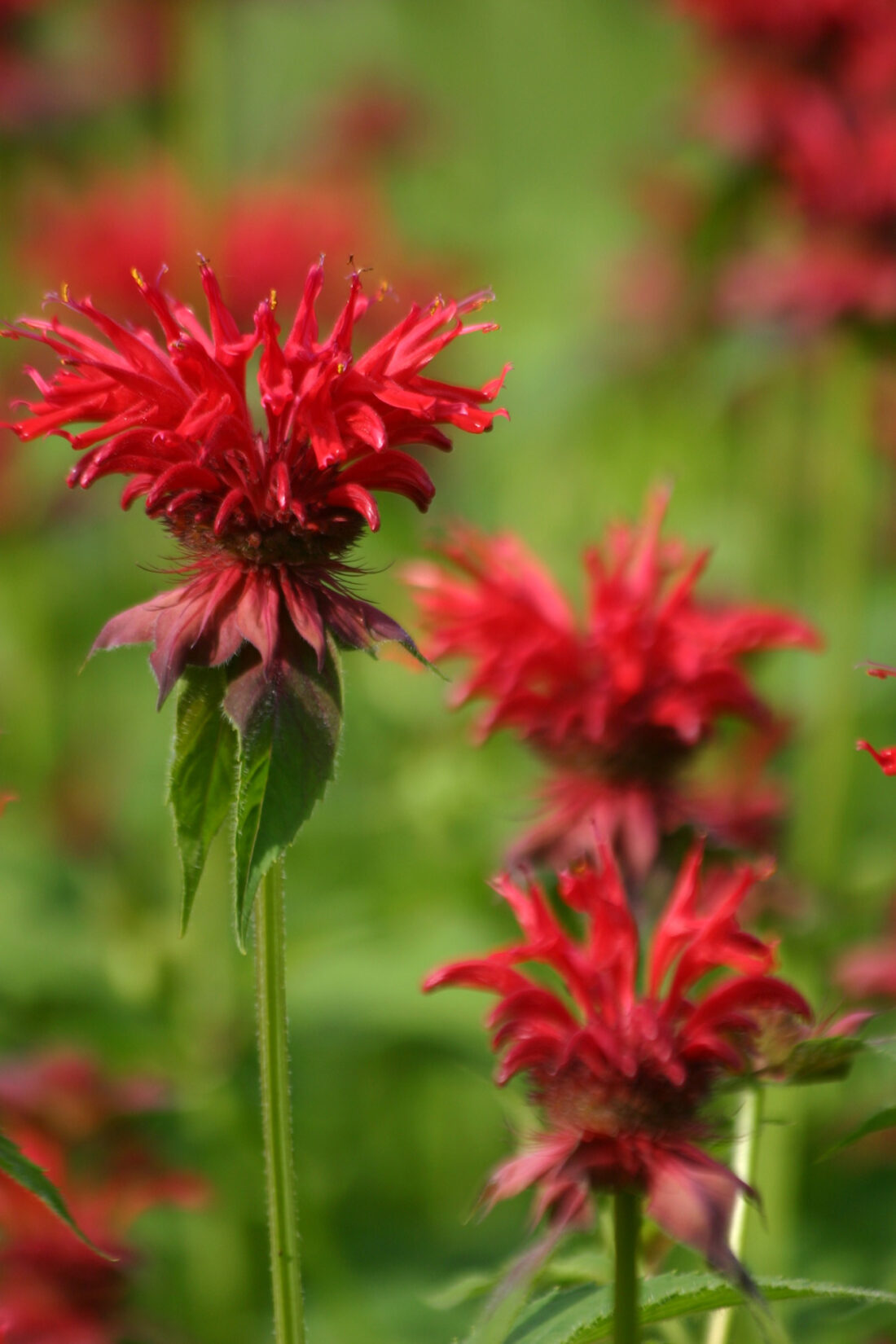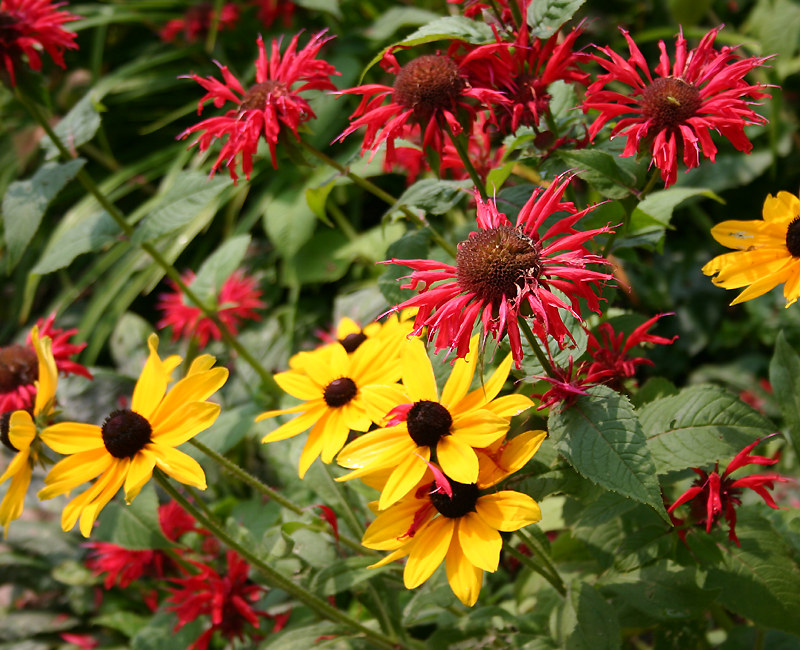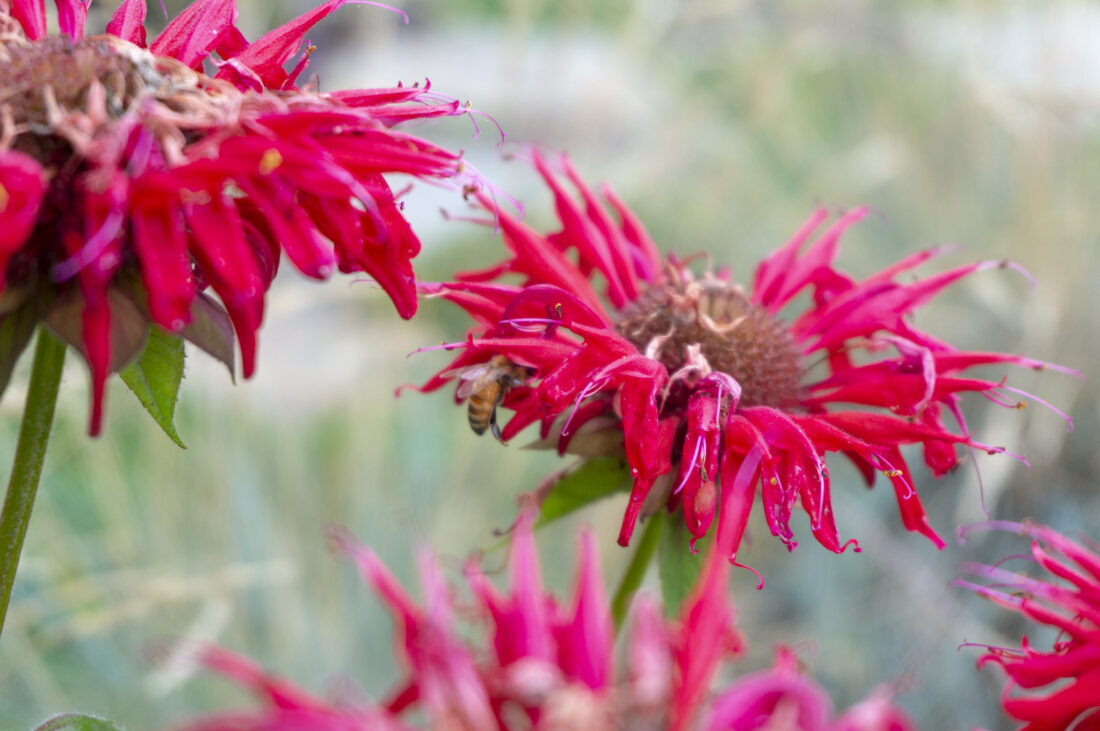Every garden needs a showstopper—something with real presence, something that hums with life and story. For me, that’s Monarda didyma, better known as red bee balm.

Sure, the purple varieties are nice (I grow those too), but the red? The red makes me swoon. It’s electric. It buzzes—visually and literally—with pollinators, color, and energy. This year, I’m planting a wide swath of red bee balm woven together with lavender, and I can already picture the summer symphony of scent, motion, and color it’s going to create. The pairing is as stunning as it is practical—both plants attract pollinators, and the contrast between cool violet and fiery crimson is one of those combinations that just sings.

Deanna
Monarda didyma – A Native with a Story
Monarda didyma is native to Pennsylvania and much of the eastern United States. It thrives in sun and moist soils and, if happy, will reward you with tall, brilliant blooms that look like firecrackers atop minty-scented foliage. It’s a member of the mint family (you’ll notice it likes to spread), and it’s also known as bergamot—not to be confused with the citrus used in Earl Grey tea. This “bergamot” has a long tradition as a medicinal plant, used by Indigenous communities for generations to treat everything from headaches to colds.

Oswego Tea and Yankee Street Cred
Here’s a little Boston-area trivia that’ll earn you some Yankee garden-nerd cred: Bee balm was famously used as a tea substitute after the Boston Tea Party in 1773. The Oswego people of what’s now upstate New York taught European settlers how to make “Oswego Tea” using the leaves of Monarda didyma, and the habit spread rapidly after colonists dumped their East India Company tea in protest. So when you’re sipping bee balm tea in your garden, you’re participating in a centuries-old tradition of herbal resistance. How’s that for revolutionary flavor?

Design Ideas + Garden Tips
Aside from being historically rich, bee balm is a garden designer’s dream. Use it to:
- Draw in hummingbirds, bees, and butterflies (seriously, it’s like wildlife TV).
- Add height to borders—it can grow 2 to 4 feet tall.
- Fill in damp areas—bee balm prefers moist soil, making it ideal for rain gardens.
- Create movement and rhythm when planted in groups, especially with companions like echinacea, rudbeckia, or—like I’m doing—lavender.
Just be warned: it can get a little rambunctious. Bee balm spreads by rhizomes and loves to colonize. If you’re dealing with limited space, you might want to contain it or divide it every couple of years to keep it from taking over.
There are some plants you grow because they’re useful. Others because they’re beautiful. And then there are the ones—like red bee balm—that carry stories, summon pollinators, light up your borders, and maybe, just maybe, make you feel a little more connected to the land and its layers of history.
If you’ve got a patch of sun and a love for bold, joyful plants, add some Monarda didyma to your garden. Revolutionary spirit included.
I heart Bee Balm too! Except for the bees it brings – cause my silly dogs think they are fun to sniff!
http://www.newfs.org/visit/nasami-farm/new-plants-for-2009.html
Please see new native GORGEOUS spring ephemerals available at New England Wild Flower Society’s nursery.
Happy Happy SPRING!!!
One of my very favorites.
Love this! Bee balm’s got personality—and history. Wild, vibrant, and a pollinator magnet. Definitely worth the occasional garden takeover. 🌺🐝